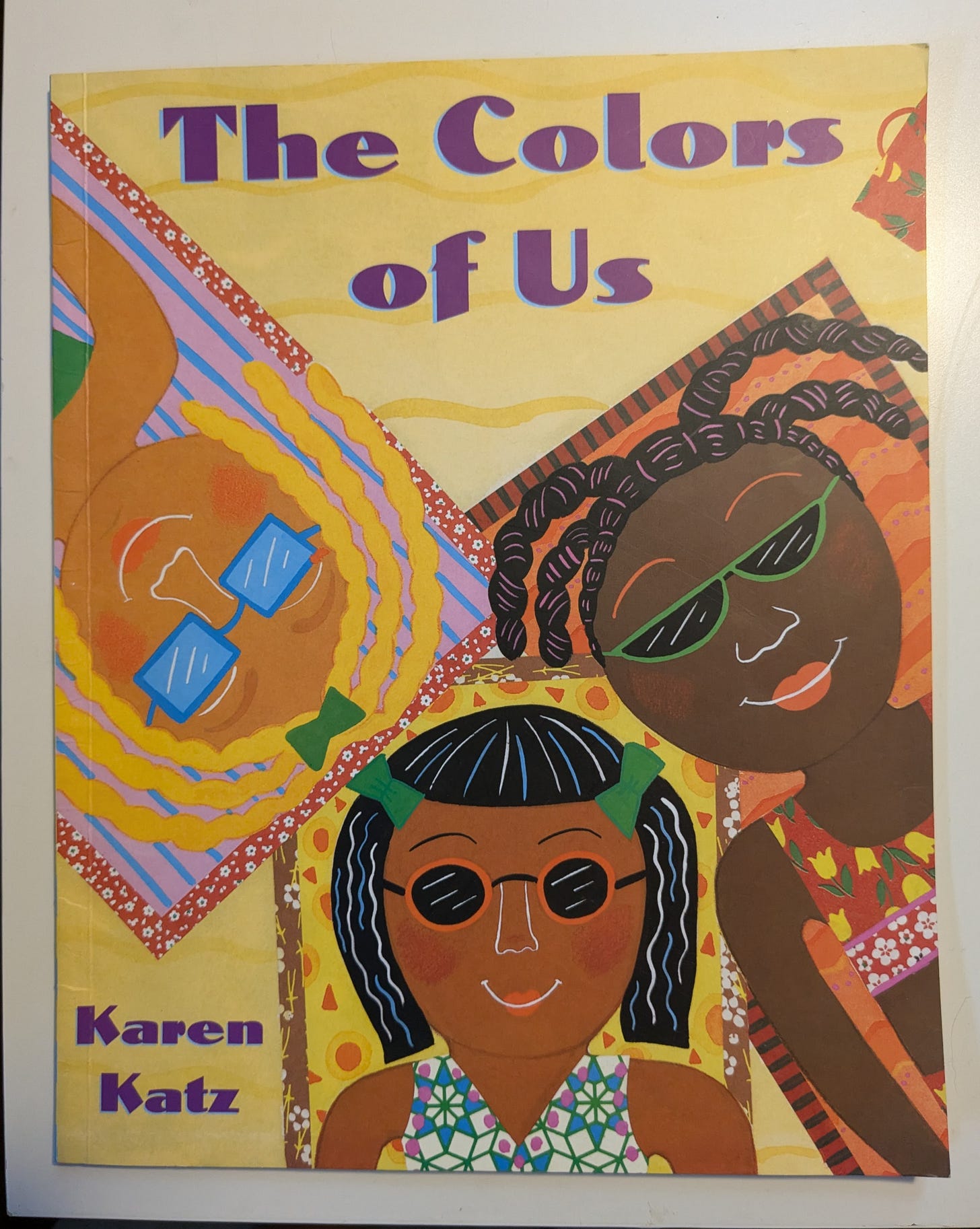Karen Katz is a children’s author and illustrator who has specialized in books for early childhood. As babies, my children especially loved “Where Is Baby’s Belly Button?”, a peek-a-boo style board book with flaps to flip. This book was so worn out that several flaps were re-adhered with clear packing tape after having been torn off by small hands. Karen Katz designs pictures with bright colors and depicting children from a variety of backgrounds. On her website, she writes that she’s “always been interested in folk art from around the world: Indian miniatures, Mexican ceramics, fabrics, Chagall, Matisse, children’s art, and primitive painting, and I love to paint and experiment with pattern, texture, collage and color.”
These vibrant illustrations are evident in her picture books as well, my favorite of which is “The Colors of Us.” She created this story after she and her husband adopted a child from Central America. The book explains how we each have similarities and differences that connect us in our communities. Lena, the main character, with her mother’s help, explores how each person she knows in her community has a slightly different skin color from anyone else. They come up with creative descriptive names for each person’s particular shade. (Be careful, some of the adjectives involve food and you might get hungry reading this book!) Some persons are the color of French toast, others are like chocolate or peanut butter. Lena notices that even in the same family, there can be different hues. I’ve observed this variation in my own family: my youngest generally stays tan year-round while my oldest is paler than me, yet without the red undertones of her father. Lena is encouraged to consider how she mixes red, black, yellow, and white paints to create the different skin tones of her friends and family because they are not all the same hue of brown. Instead, each one is their own beautiful shade.
I appreciate Karen Katz tackling this subject head-on, as her book and others (another one is “The Skin You Live In” written by Michael Tyler and illustrated by David Lee Csicsko) helped frame my conversations with my own children around skin color. Children notice their differences and similarities. It’s important to give them words and helpful ways to talk about those distinctions. In contrast, when I was growing up, I was taught to put on blinders and “not see color.” This harmful method I unlearned during my first graduate degree program in Intercultural Communication. I grasped then that pretending to not see a person’s skin color meant that then you didn’t see the whole person. It meant you were ignoring part of their history and how they were shaped by a particular background and how they are perceived by others.
Karen Katz and other authors and illustrators are not afraid to show children how we are similar and how we are different and to give us ways to express those characteristics.




